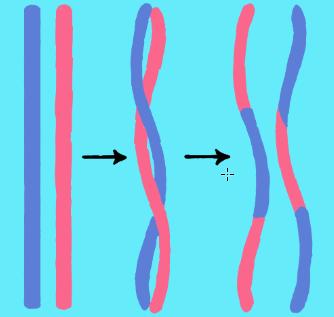
1 minute read
Advancing Life: Biomedical Technology
from 2023 Biology Edition
by scienceholic
of the molecular pathways underlying the phenotype When utilizing microsatellite markers for genetic mapping, there is an attempt to determine the link between a certain microsatellite allele (shown as a band on a gel) and the phenotype of interest.

Advertisement

These tiny markers have two to six tandem base pair repeats that are also known as short tandem repeats (STRs), simple sequence repeats (SSRs), simple sequence length polymorphisms (SSLPs), and variable number tandem repeats (VNTRs). The number of nucleotide repeats in a single microsatellite locus is highly polymorphic, resulting in several alleles (repeat number differences) of a single locus in a population. PCR can be utilized by using primers chosen to flank the microsatellite locus to identify these alleles When the PCR products are separated using agarose gel electrophoresis, a banding pattern is formed that depicts the microsatellite genotype of each DNA sample.
Mapping often begins by crossing two parental individuals, a homozygous (same allele variant) mutant (changed) and a homozygous wild type (unchanged), to produce a heterozygous F1 population The F1 progeny are heterozygous for the phenotypic locus as well as the microsatellite loci used for mapping. The heterozygous F1 can be used in subsequent crosses to determine whether the newly discovered phenotype (the new mutation) co-segregates with a specific microsatellite locus.
The frequency of parental and recombinant banding patterns will fluctuate depending on whether the new mutation is genetically linked to the specific microsatellite locus. The majority of microsatellite markers demonstrate independent assortment (that is, they are not genetically linked to the mutation and will thus inherit separately), resulting in an equal number of parental and recombinant microsatellite bands in mutant phenotypic F2 plants If a microsatellite marker is genetically linked to the new mutation, F2 progeny with the recessive mutant phenotype are more likely to inherit the microsatellite allele of the parent mutant strain due to the new mutation being on the same chromosome. This results in them inheriting together most of the time. As a result, by analyzing molecular marker data, the gene responsible for the unique phenotype can be identified










